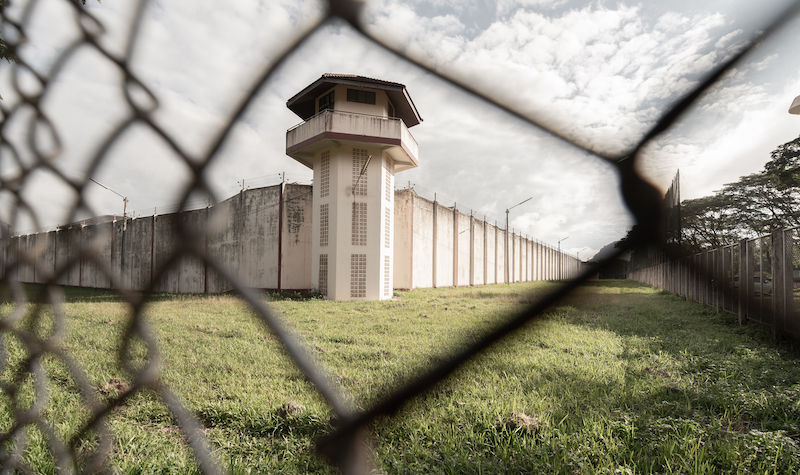
Administrative and judicial processes offer those incarcerated in federal prisons a path home.
Since the pandemic began, at least 222 people serving federal prison sentences have died due to complications from COVID-19. But they did not all have to die while in federal custody.
The U.S. Congress has established a process for sick and vulnerable people in federal prisons to seek “compassionate release”—a process through which sentencing courts can reduce an incarcerated person’s sentence to “time served.” When compassionate release is granted, the Federal Bureau of Prisons—the federal agency responsible for overseeing the sentences of people convicted of federal crimes—releases people from prison immediately.
As part of the First Step Act of 2018, Congress increased “the use and transparency of compassionate release.” An incarcerated person may qualify for compassionate release if a court determines that “extraordinary and compelling reasons” justify a sentence reduction.
Under the First Step Act, incarcerated people have two tracks through which they can get compassionate release requests before courts.
The first track is through the Bureau of Prisons’ administrative remedy program. Incarcerated people must submit a request for administrative remedy to the warden of their facility, explaining why they qualify for release. These requests must, at minimum, contain an explanation of the extraordinary and compelling reasons present and the details of a person’s proposed release plans, including where they will live and how they will receive any necessary medical care.
Prison wardens will then review each request. When wardens agree that extraordinary and compelling reasons exist, they submit the request to the Bureau of Prisons General Counsel. If the General Counsel concludes that the request should be approved, then the Bureau of Prisons Director makes a final decision. The director can deny the warden and General Counsel’s recommendation, which people in prison cannot appeal—but if the director approves a recommendation, the Bureau will file a motion for compassionate release on the person’s behalf with the court that imposed the person’s prison sentence.
In practice, wardens tend to deny requests—leaving incarcerated people to appeal to the Bureau General Counsel, which can grant a request or affirm the warden’s rejection. The General Counsel’s decision on appeal is a final administrative decision that the person seeking release cannot appeal further.
Before 2018, this administrative process afforded people in prison their only opportunity for compassionate release. The First Step Act, however, now empowers incarcerated people to seek compassionate release themselves by bringing a motion to their sentencing courts directly, creating an important second track for obtaining compassionate release.
Incarcerated people filing their own compassionate release motions must demonstrate that they have exhausted their administrative remedies. People can demonstrate such exhaustion by showing that they have concluded the administrative remedy process, either with the Bureau of Prisons Director’s refusal to file a motion on their behalf or the General Counsel’s rejection on appeal.
Importantly, people seeking release can demonstrate exhaustion in a second way—without completing the administrative remedy process. To do so, incarcerated people must show that 30 days have passed since they submitted their original request to their wardens, who either denied or ignored those requests. Once people seeking release meet that burden, their motions may be deemed ripe for review in court.
Between March and May of 2020, the Bureau of Prisons had approved no more than 2 percent of requests for release. Given this inaction, incarcerated people now are using the second track to take their requests to court themselves.
When compassionate release motions finally come before sentencing courts, those courts must determine whether extraordinary and compelling reasons warrant reducing a person’s sentence.
Although Congress has not defined what counts as an extraordinary and compelling reason, the U.S. Sentencing Commission—an independent agency responsible for establishing sentencing practices among federal courts—has issued a policy statement describing conditions that may satisfy the extraordinary and compelling requirement, including a person’s age, medical conditions, and family circumstances.
Some district courts have determined that extraordinary and compelling reasons exist only when incarcerated people can demonstrate that one or more of the Sentencing Commission’s enumerated conditions are present, or when the Bureau of Prisons has moved for release on a person’s behalf.
But many courts—including four federal appellate courts—have concluded that the Sentencing Commission guidance does not contain a binding or exhaustive list of extraordinary and compelling circumstances. One appellate court recently held that when incarcerated people file compassionate release motions on their own behalf, district courts may consider any reasons for release that a petitioner presents. As a result, sentencing courts can consider many factors when reviewing motions for compassionate release, such as a person’s demonstrated rehabilitation, the Bureau of Prisons’ inability to provide proper medical care to incarcerated people, and gross disparities between a petitioner’s sentence and one that would be imposed today.
With the onset of the COVID-19 pandemic and its prevalence in prison facilities, many federal courts have held that the conditions of confinement during the pandemic contribute to the extraordinary and compelling reasons justifying compassionate release. For example, courts have observed that prisons are “powder kegs for infection” due to “greater risks of infectious disease spread within detention facilities.” Data kept by the Bureau of Prisons confirm these concerns, as more than 46,000 federally incarcerated people—approximately one third of people in federal custody—have tested positive for COVID-19.
Furthermore, many people in prison have characteristics that correlate with increased likelihood of hospitalization and death due to COVID-19. About 40 percent of people incarcerated in federal prisons have chronic conditions, including high blood pressure, diabetes, and obesity—conditions that the Centers for Disease Control and Prevention have identified as presenting heightened risk of severe illness from COVID-19. About 20 percent of all people in federal prison facilities are over 50 years old, another factor suggesting a greater chance of more severe illness.
In addition, race and ethnicity correlate with worse COVID-19 outcomes, and people of color are incarcerated at disproportionately high rates—about 40 percent of the federal prison population is Black and about 30 percent is Hispanic. Together, these factors suggest that people in prison are more likely to suffer from severe COVID-19 illness than the general population is.
Many sentencing courts are starting to see that the risk of contracting COVID-19 in prison, combined with conditions and characteristics that may make people more susceptible to severe COVID-19 illness, present circumstances that warrant compassionate release. And even without the imminent threat of contracting COVID-19, courts have recently authorized compassionate release for people with excessive sentences and exceptional disciplinary records.
But other courts have held that the possibility of contracting COVID-19 is not independently sufficient to demonstrate extraordinary and compelling reasons for release, and as a result, many people remain incarcerated after courts have denied their motions.
As courts across the country continue to take different approaches to compassionate release, people incarcerated in federal prisons are likely to continue using this tool as a way to return home.



